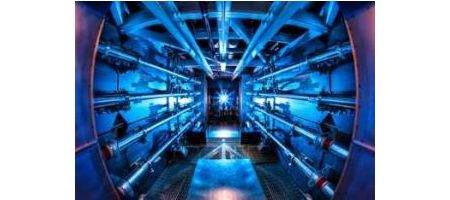Scientists have fired off the most powerful ever laser pulse, hitting 500 trillion watts.

The Lawrence Livermore National Laboratory’s National Ignition Facility (NIF) system used 192 beams to deliver the 500 terawatts, along with 1.85 megajoules of ultraviolet laser light to its target.
To put this in context, that’s a thousand times more power than the United States uses at any given moment, and 1.85 megajoules of energy is about 100 times the capacity of any other laser today. But that’s necessary to reach the NIF’s target of igniting hydrogen fusion fuel in the laboratory and getting more energy out than was put in.
In the test, the 192 lasers fired within a few trillionths of a second of each other onto a two-millimeter-diameter target. The total energy matched the amount requested by shot managers to within better than one percent, says the team.
The beam-to-beam uniformity was also within one percent, making NIF not only the highest energy laser of its kind but the most precise and reproducible.
“NIF is becoming everything scientists planned when it was conceived over two decades ago,” says NIF director Edward Moses.
“It is fully operational, and scientists are taking important steps toward achieving ignition and providing experimental access to user communities for national security, basic science and the quest for clean fusion energy.”
NIF, says the team, is the only facility on Earth with the potential to duplicate the actual phenomena that occur in the heart of a modern nuclear device – hopefully making a return to underground nuclear testing unnecessary.
It’s also providing the unique opportunity for scientists to create the same extreme states of matter that exist in the centers of planets, stars and other celestial objects.
Most excitingly, perhaps, it’s laying the groundwork for the development of fusion energy.






